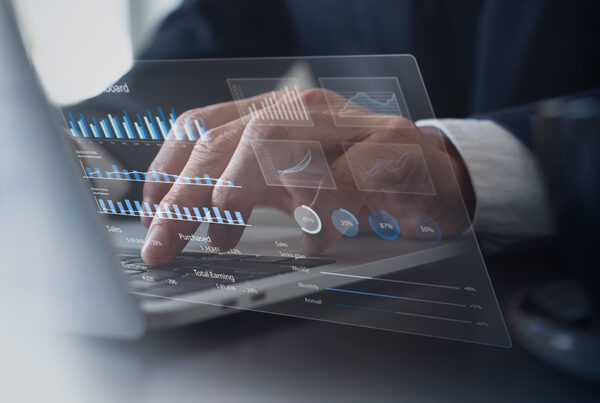Summary
For fast-growing SaaS companies, accurate revenue recognition following GAAP principles is paramount, especially when seeking external capital. Manual accounting processes, relying on spreadsheets and lengthy close periods, introduce significant risks like errors, audit issues, and misstated financials. Discover how revenue accounting automation transforms SaaS operations, offering a modern platform solution and strategies to build a scalable finance stack without increasing headcount.
Key Takeaways
- Manual revenue accounting is too complex and risky for growing SaaS businesses, often leading to audit findings, compliance gaps, and delayed insights.
- Automation dramatically compresses month-end close timelines from days to just 1-3 days, providing executives and investors with real-time financial visibility.
- Implementing automated deferred revenue schedules, SSP allocation, and journal entry creation ensures compliance with ASC 606 and IFRS 15, eliminating manual errors.
- Strategic revenue recognition automation leads to faster, more confident reporting, robust audit readiness, and enables finance teams to focus on high-value strategic planning.
- Modern SaaS finance teams build lean, automation-first stacks that integrate CRM, billing, and ERP to unify revenue recognition and invoicing processes for superior efficiency.
As SaaS companies grow, the importance of following GAAP accounting principles for revenue recognition becomes more critical as the business seeks external capital through selling equity or raising debt. Manual journal entries, spreadsheet-based reconciliations, and week-long close periods introduce the potential for errors, external audit issues, and misstated financials. This post breaks down the value of revenue accounting automation for SaaS businesses, what to look for in a modern platform, and how to build a finance stack that scales without headcount bloat.
Why Manual Revenue Accounting Doesn’t Work for SaaS
1. Revenue Recognition is Too Complex to Handle Manually
SaaS companies deal with:
- Deferred revenue across the contract term
- Usage-based billing and variable fees
- Contract modifications such as upgrades and downgrades
- Performance obligation tracking
- Determining standalone selling prices (fair market value)
Trying to manage revenue recognition in spreadsheets isn’t just slow—it’s risky. Audit findings, incorrect reports, and compliance gaps are common. More importantly, it prevents finance teams from providing timely insights to the business.
2. Month-End Closes Take Too Long
A fast-growing SaaS business can’t afford to wait 10–15 days for a month-end close. But many do because:
- They manually track revenue schedules
- They enter journal entries by hand into NetSuite or QuickBooks
- They reconcile billing, payments, and revenue using CSVs
This lag creates challenges with the board and investors. When stakeholders ask for topline revenues or to see the income statement, it takes days to respond. Automation compresses the close timeline, giving execs and investors real-time visibility.
3. Your Team Can’t Scale With the Business
What happens when you grow from 50 to 500 customers? If every new contract means another revenue schedule to track in Excel, you’ll quickly overwhelm your accounting team. Hiring more FTEs isn’t the answer—automation is. With a specialized revenue recognition application like Ordway, deferred revenue schedules, journal entry creation, and GL sync scale without human bottlenecks.
What Aspects of Revenue Recognition Should You Automate First?
Revenue Recognition
Tools like Ordway automate:
- Deferred revenue schedules
- Standalone selling price (SSP) allocation
- Tracking and satisfying performance obligations
- Revenue re-allocations after contract modifications
This is essential to stay compliant with ASC 606 and IFRS 15, especially with complex pricing models.
Journal Entry Creation
Every invoice, credit, and revenue event should trigger automated journal entries:
- For revenue, invoices, payments, credits and refunds
- Mapped to the right accounts based on product, customer, or region
- Accompanied by full audit logs and traceability
- Easily posted to your GL in your ERP or accounting system
This eliminates the risk of error-prone uploads and stale data.
Close & Reconciliation Workflows
With automation:
- Deferred revenue schedules are automatically created with new contracts
- Revenue schedules are adjusted with contract modifications
- Revenue is recognized each period as performance obligations are satisfied
- Subledger and general ledger are synchronized without manual adjustments
Finance teams can lock the books faster and with more confidence. Audit prep becomes proactive, not reactive.
The Strategic Upside of Revenue Recognition Automation
Faster, More Confident Reporting
When the close takes 1-3 days instead of 10-15, information flows faster to the executive team and board:
- Executives get top-line revenue for the income statement
- Investors have greater confidence in the numbers
Finance and accounting can spend time on exceptions rather than basic calculations
Audit Readiness Without the Panic
As SaaS businesses grow the importance of external audits increases—whether it’s for equity funding, debt covenants, regulatory compliance or an exit through M&A. Automation means:
- You can produce audit trails on-demand
- Revenue schedules are system-generated, not spreadsheet-built
- Internal controls are enforced automatically
More Strategic Headcount Allocation
Don’t hire another accountant to close faster. Automate. Then use that capacity for:
- Strategic planning
- Scenario modeling
- Investor updates and analysis
This is how lean teams outperform larger ones.
What the Best SaaS Teams Are Doing Now
Modern SaaS finance teams are building lean, automation-first stacks:
- CRM → Billing → ERP is synced, not stitched together manually
- New customer contracts are automatically converted into revenue schedules
- Contract modifications trigger adjustments to deferred revenue tables
- Corporate revenue recognition policies are enforced automatically by the system
- Revenue recognition and invoicing are unified in the same platform
They’ve moved from reactive number crunching to proactive business leadership. Examples:
What to Look for in a SaaS Revenue Recognition Platform
- Revenue-first design: Native support for revenue accounting. Not a billing application that bolted on rev rec from an acquisition.
- Native ERP integrations: Easily sync with Xero, NetSuite, QuickBooks, Sage Intacct, SAP, Oracle
- Contract modification support: Supports upgrades, downgrades, renewals, usage overages
- Real-time automation: Instant journal entries, no batch jobs
- Audit trail visibility: Every journal entry change is traceable
Ordway’s revenue recognition engine checks every one of these boxes.
Conclusion
Implementing revenue recognition automation is not just about compliance; it’s a strategic imperative for SaaS companies aiming for sustainable growth and operational excellence. By moving beyond manual spreadsheets and embracing integrated, automated platforms, businesses gain invaluable real-time financial visibility, achieve rapid audit readiness, and empower their finance teams to transition from reactive number-crunching to proactive strategic leadership. This shift ultimately builds investor confidence and drives more informed business decisions.
Related Frequently Asked Questions
How does automation of revenue accounting support ASC 606 compliance?
It automates revenue schedules, performance obligations, and SSP allocation—eliminating the manual work that causes compliance risk.
Can we automate revenue recognition without replacing our ERP?
Yes. Ordway integrates with NetSuite, Sage Intacct, QuickBooks, and Xero, pushing clean journal entries and rev rec data automatically.
What’s the ROI of revenue recognition automation?
SaaS companies see faster closes, cleaner audits, and avoid hiring additional accounting staff as they scale.
You May Also Like
 Revenue Recognition for Usage-Based Pricing
Revenue Recognition for Usage-Based Pricing



